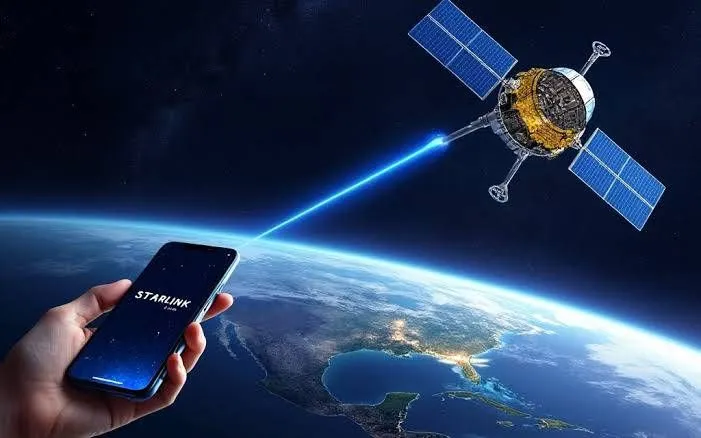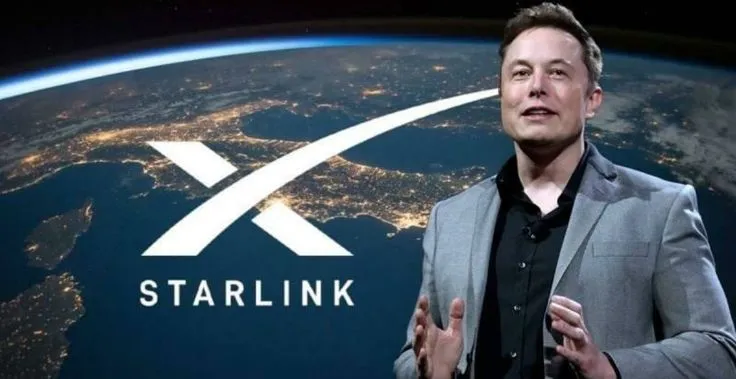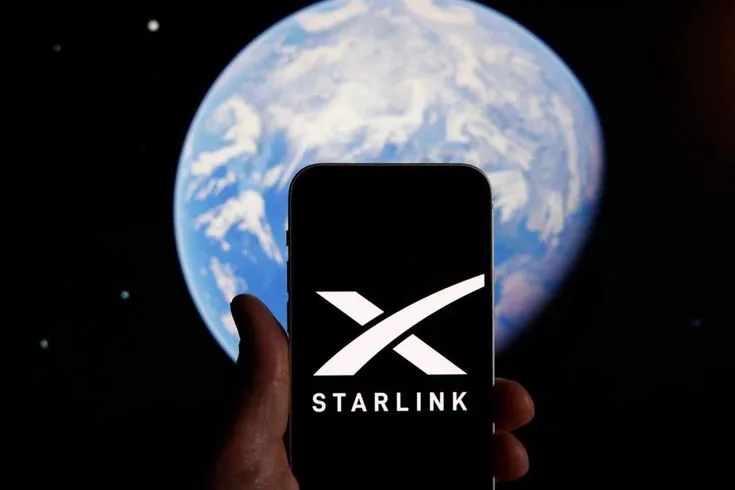Introducción: Una visión más allá de las torres de telefonía móvil
Cuando Elon Musk habla, las industrias prestan atención. Desde coches eléctricos hasta cohetes reutilizables, tiene un historial de convertir lo que antes parecía imposible en inevitable. Sin embargo, su última declaración traspasa los límites de las telecomunicaciones: dentro de dos años , afirma Musk, los teléfonos inteligentes ya no dependerán de torres de telefonía móvil, sino que funcionarán como “walkie-talkies satelitales”.
Esta audaz idea reinventa la comunicación móvil y podría transformar miles de millones de dispositivos en todo el mundo. Pero ¿es realista? ¿Y qué significará para los consumidores, los gigantes de las telecomunicaciones y los gobiernos que el innovador más rico del mundo intente poner los satélites directamente al alcance de todos?
El historial de Musk: de los coches al espacio y los teléfonos
Los escépticos a menudo descartan las promesas de Musk como exageraciones descabelladas , pero su historial complica tales desestimaciones.
En 2008, cuando Tesla estaba al borde del colapso, pocos creían que los coches eléctricos pudieran competir con los de gasolina. Para 2020, Tesla era el fabricante de automóviles más valioso del mundo.
En 2010, SpaceX fue objeto de burlas por sus fallidos lanzamientos de cohetes. Hoy, domina la industria de los lanzamientos comerciales, transportando astronautas a la Estación Espacial Internacional.
En 2022, Musk sorprendió a los reguladores y competidores al comprar Twitter (ahora X ) y transformarla en una plataforma basada principalmente en suscripciones.
La idea de convertir los teléfonos en dispositivos conectados por satélite puede sonar futurista, pero también lo era enviar cohetes a Marte o crear automóviles autónomos.

La tecnología detrás del sueño
Entonces, ¿cómo podría Musk lograr que los teléfonos inteligentes se comporten como walkie-talkies satelitales ? La respuesta está en Starlink , la creciente constelación de satélites de órbita baja (LEO) de SpaceX.
A diferencia de los satélites de telecomunicaciones tradicionales que orbitan a miles de millas sobre la Tierra, Starlink opera más cerca (aproximadamente 340 millas de altura), lo que reduce la latencia y hace posible la comunicación en tiempo real.
En 2023, SpaceX anunció una alianza con T-Mobile en EE. UU., prometiendo conectar teléfonos directamente a satélites utilizando las bandas de espectro existentes. En lugar de requerir voluminosos teléfonos satelitales, los smartphones comunes podrían enviar mensajes de texto y hacer llamadas, incluso en zonas remotas.
Si Musk tiene éxito, el sistema evitaría eficazmente las torres de telefonía móvil y convertiría cada teléfono inteligente en un walkie-talkie global que funciona en cualquier lugar con vista al cielo.
¿Por qué dos años? La pregunta del cronograma
Musk insiste en que dentro de dos años la tecnología será funcional a gran escala. Ese plazo genera dudas.
Barreras de hardware : La mayoría de los smartphones aún no están optimizados para la comunicación satelital. Si bien Apple ha introducido mensajes de texto satelitales de emergencia en sus últimos iPhones, la integración completa de voz y datos requiere nuevos chips y antenas.
Regulatory barriers: Spectrum allocation is tightly controlled by governments. Musk’s partnerships with telecom carriers like T-Mobile are a workaround, but expanding globally will require negotiating dozens of national regulators.
Financial barriers: Launching and maintaining thousands of satellites costs tens of billions. While SpaceX’s reusable rockets reduce costs, scaling fast enough to cover the globe remains daunting.
Still, Musk thrives on aggressive timelines. His two-year target may be optimistic, but it creates pressure that often accelerates innovation.
Impact on Consumers: From Remote Villages to Disaster Zones
If achieved, Musk’s vision would radically change how and where humans communicate.
Eliminating Dead Zones
- : No more dropped calls on highways, no more “no service” warnings on mountaintops or in deserts.
Disaster Recovery: After earthquakes, hurricanes, or wars, when cell towers collapse, satellite connectivity could keep survivors and rescuers connected.
Developing Nations: Millions in rural Africa, Asia, and South America live without reliable coverage. Satellite phones could leapfrog traditional telecom infrastructure, connecting the unconnected.
Travel and Exploration: Adventurers, sailors, and pilots could rely on ordinary phones for global communication without expensive satellite equipment.
For ordinary users, this means a future where smartphones truly work everywhere.
The Telecom Industry’s Fear: Disruption on a Massive Scale
For telecom companies, Musk’s vision is both opportunity and existential threat.
Opportunity: Partnering with SpaceX could expand coverage and attract customers in underserved areas.
Threat: If Starlink bypasses towers entirely, it could reduce the role of traditional carriers, cutting into billions in infrastructure investments.
Analysts predict some carriers may resist Musk, fearing disintermediation. Others may rush to strike deals, betting that resisting a trillion-dollar empire is futile.
Governments and Geopolitics: Who Controls the Sky?
Another challenge lies in geopolitics. Communication infrastructure is not just about business — it is about sovereignty and control.
Countries like China and Russia may resist Starlink penetration, fearing foreign surveillance or loss of control.
Authoritarian regimes could view satellite-connected phones as dangerous, allowing dissidents to communicate beyond censorship.
Democratic governments, meanwhile, may welcome Musk’s technology for disaster resilience but will still demand regulatory oversight.
Musk’s global influence — already controversial with Starlink’s role in Ukraine — could expand further if he controls the backbone of global mobile communication.
Technical Hurdles: Walkie-Talkies or Wi-Fi Everywhere?
Some engineers argue that Musk’s metaphor of “satellite walkie-talkies” oversimplifies the challenge.
Bandwidth limits: Satellites cannot handle the same volume of traffic as cell towers. Full-scale streaming or gaming may be limited.
Battery drain: Direct satellite communication requires more power, potentially shortening smartphone battery life.
Weather and obstruction: Dense urban areas or heavy storms could disrupt connections.
Realistically, the first rollout may look more like basic text and emergency calling rather than full 5G-like performance. But even that would be revolutionary.

Musk’s Motivation: Legacy and Power
Why does Musk care so much about turning phones into satellite devices? Beyond profit, the move fits his larger mission.
Democratizing Connectivity: Musk has long said his goal is to “connect every human on Earth.”
Synergy with SpaceX: More Starlink users mean more revenue, funding Mars missions.
Control of Communication: By owning both the infrastructure (satellites) and platform (X/Twitter), Musk could become one of the most powerful communication gatekeepers in history.
In other words, this is not just about fixing dead zones — it’s about cementing Musk’s role as the architect of global connectivity.
Public Reaction: Excitement vs. Skepticism
Fans are thrilled. Social media buzz paints Musk as once again promising to change the world. Enthusiasts imagine a future where lost hikers text from mountaintops or farmers in remote fields join global markets.
Skeptics, however, warn that Musk often overpromises. They point to the delayed Cybertruck, unfinished Hyperloop projects, and missed Tesla deadlines as cautionary tales. Will “satellite walkie-talkies” be another overhyped promise?
The Business Model: Who Pays for the Sky?
Pricing will also determine success.
Will satellite connectivity be free, included in existing plans, or charged as a premium service?
If telecom carriers partner with Musk, will costs rise for consumers?
Could free basic coverage disrupt the economics of mobile plans, forcing carriers to rethink their models?
Some predict Musk could bundle connectivity with X Premium or Tesla products, creating a powerful ecosystem spanning cars, phones, satellites, and social media.

Conclusion: The Next Great Leap?
El plan de Elon Musk para que los teléfonos funcionen como walkie-talkies satelitales en dos años suena a ciencia ficción. Sin embargo, también lo hicieron los cohetes reutilizables, los vehículos eléctricos de consumo masivo y los hyperloops tunelizados.
De tener éxito, el proyecto redefiniría la comunicación móvil, eliminando zonas sin cobertura, fortaleciendo las zonas de desastre y conectando a miles de millones de personas. Sin embargo, el camino por recorrer está plagado de obstáculos técnicos, regulatorios y políticos.
Una cosa es segura: cuando Musk fija una fecha límite, el mundo le presta atención, incluso si tarda más de lo prometido. Y si dentro de dos años te encuentras llamando a un amigo desde el desierto del Sahara sin nada más que tu teléfono, sabrás que, una vez más, Musk convirtió sus palabras en realidad.
News
🌹 El último deseo de Paulina Tamayo: una despedida que conmovió a todo un país
😢 El estremecedor último deseo de Paulina Tamayo revelado por Willie: lo que pidió antes de morir conmovió profundamente a todo…
“No estaba preparado para esto”: la emotiva confesión de Juan Ferrara tras la inesperada muerte de Alicia Bonet que conmociona a todos
“No estaba preparado para esto”: la emotiva confesión de Juan Ferrara tras la inesperada muerte de Alicia Bonet que conmociona…
A sus 72 años, el Dúo Pimpinela rompe el silencio dejando al mundo conmocionado
Después de años de discreción, Pimpinela sorprende con una revelación que hizo llorar a sus fans. A sus 72 años,…
💔 El precio de una frase: Sergio Goyri rompe el silencio sobre la vergüenza que marcó su carrera y lo dejó al borde del olvido
😱 A sus casi 70 años, Sergio Goyri enfrenta las consecuencias del escándalo con Yalitza Aparicio que aún lo persigue Sergio…
A los 70 años, María Sorté finalmente admite lo que todos sospechábamos
La actriz mexicana María Sorté sorprende con una confesión impactante a los 70 años: “Siempre lo sospecharon… y es verdad”,…
Marco Antonio Solís: la confesión más íntima del “Buki”
“Después de décadas de misterio, Marco Antonio Solís, ‘El Buki’, confiesa a los 64 años lo que su público siempre…
End of content
No more pages to load












